Have you ever stopped to wonder what lies beneath that plush exterior of your cushion, or what makes it so soft and cozy? Well, the secret lies within the cushion fillings. These magical materials are the key components that give your cushions their shape, support, and comfort.
If you're looking to upgrade your home decor or simply need to revitalize your worn-out cushions, understanding the different types of cushion fillers available in the market is essential. Cushions are the unsung heroes of our living spaces, adding a touch of comfort, style, and personality to sofas, armchairs, and even beds. The type of filling inside your cushions significantly impacts their comfort level, support, and overall longevity.
From softness to durability, each filling type offers unique qualities that can greatly impact your comfort level. Whether you prefer sinking into a cloud-like cushion or desire firm support for your back, understanding the various fillings available will help you make an informed decision.
We've curated this comprehensive guide just for you, exploring the various cushion fillers available and helping you choose the perfect one for your needs. From luxurious fluffy feathers to supportive memory foam, we've got it all covered.
So, whether you're looking to revamp your living room with plush cushions or trying to find the perfect pillow for a good night's sleep, our comprehensive guide will equip you with the knowledge and insights you need to choose the right filling materials for your cushions.
Sit back, relax, and let us uncover these different cushion fillings that will leave you feeling like you're on cloud nine.
Table of Content
- What are Cushion Fillers?
- Why Are Cushion Fillers Important?
- 9 Different Types of Cushion Fillings
- FAQs on Cushion Fillers
- Conclusion
What are Cushion Fillers?
Cushion fillers, also known as cushion inserts, inlays, or pads, are the inner stuffing that provides the shape, support, and comfort of your cushions. They are typically placed inside cushion covers or pillowcases to create a plush and supportive feel when sitting or reclining.
They come in various materials, each offering unique properties that impact the feel, function, and lifespan of your cushions. These furniture fillings play a crucial role in your overall comfort experience, as the right filling can transform a stiff cushion into a plush haven or a flat one into a supportive backrest.
Why Are Cushion Fillers Important?
Cushion fillers play a crucial role in determining the comfort, support, and overall quality of cushions. Here are some reasons why cushion fillers are important:
- Comfort: Cushion fillers provide the necessary support and softness to make cushions and pillows comfortable to sit or lie on. They create a plush and cozy surface that enhances relaxation and helps alleviate pressure points.
- Shape and Structure: Without this upholstery stuffing, pillows and cushions would be flat and lacking in shape. Fillers help maintain the desired shape and form, preventing them from looking deflated or saggy. This ensures that the cushions retain their aesthetic appeal and provide adequate support.
- Support: Cushion fillers offer support for the body and help maintain proper posture. They can provide cushioning for the head, neck, back, or other areas of the body, depending on the type of cushion. Proper support is vital for preventing discomfort and muscle strain during extended periods of sitting or lying down.
- Durability: Cushion fillers can help prolong the lifespan of cushions and pillows. They act as a protective layer, absorbing stress and reducing wear and tear on the outer fabric. Good quality fillers resist flattening and maintain their shape over time, ensuring that the cushions remain comfortable and supportive for an extended period.
- Customization: Different types of cushion stuffings have unique qualities and characteristics, allowing individuals to customize their comfort level. Some fillers offer a softer feel, while others provide firmer support. By choosing the right filler, individuals can create a personalized cushion experience that suits their preferences and needs.
9 Different Types of Cushion Fillings
1. Foam Fillers
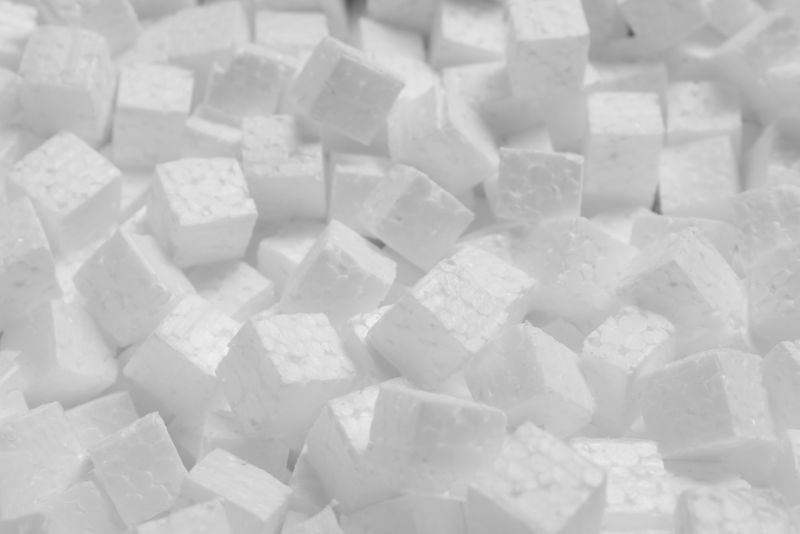
Foam cushion fillers are made from materials like polyurethane foam, memory foam, or latex foam. These cushion fillers offer excellent support and contour to the body's shape, providing a firm yet comfortable feel. The material's ability to distribute weight evenly makes it ideal for individuals seeking proper spinal alignment and a reduction in pressure points.
Additionally, foam fillers have good resilience, which means they can retain their shape and provide consistent support over time. Whether it's polyurethane foam for a more affordable option or memory foam that molds to the body, foam cushion fillers are popular choices for their supportive and durable qualities.
2. Down Fillers

Down refers to the soft undercoating found beneath the feathers of ducks or geese. It is known for its exceptional softness and lightness, making down-filled cushions and pillows feel incredibly luxurious. Down fillings create a plush and cozy feel, providing a cloud-like experience when lying or leaning on them. They offer excellent insulation, keeping users warm in colder climates.
However, down fillings may require regular fluffing to maintain their loft and prevent clumping. Furthermore, individuals with allergies should be cautious as some people can be sensitive to down feathers.
3. Polyester Fillers
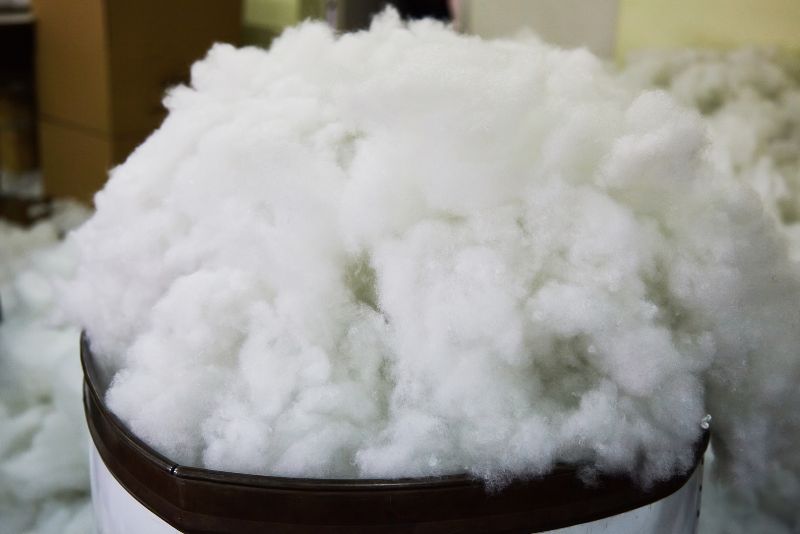
Polyester fiberfill is a synthetic material commonly used as a cushion filler. It is lightweight, hypoallergenic, and retains its shape well over time. Polyester fillers offer a soft and fluffy feel. The material's loftiness adds extra comfort, making cushions and pillows feel cozy.
Polyester fillers are often used in budget-friendly options due to their affordability. Additionally, they are easy to clean and maintain, as most polyester fillers can be machine-washed and dried without losing their shape or softness.
4. Kapok Fillers
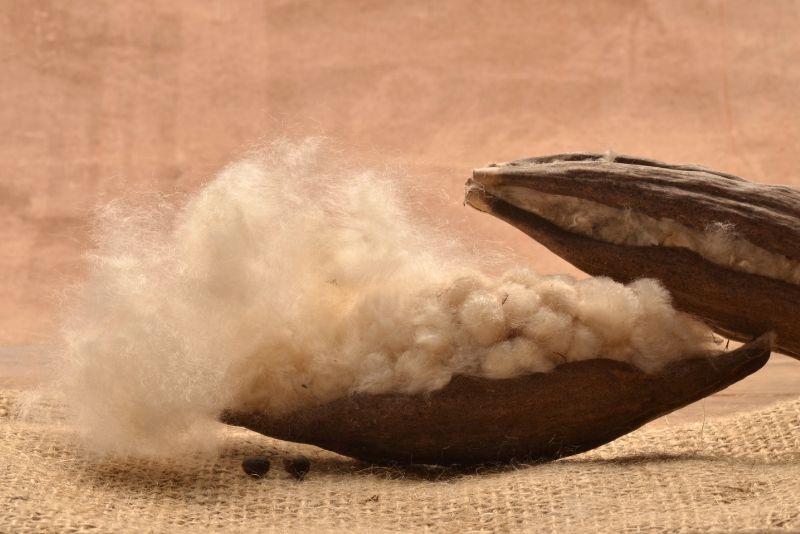
Kapok fillers are derived from the fibers of the kapok tree. This natural filling material offers a feel similar to down and feathers but is entirely plant-based. Kapok fillers provide medium-soft support, striking a balance between softness and comfort. They are resilient and retain their shape well, ensuring long-lasting cushioning.
Furthermore, kapok is an eco-friendly option as it is naturally sustainable and biodegradable. However, individuals with nut allergies should be aware that kapok comes from the seed pods of the kapok tree and may trigger allergic reactions in some cases.
5. Microfiber Fillers
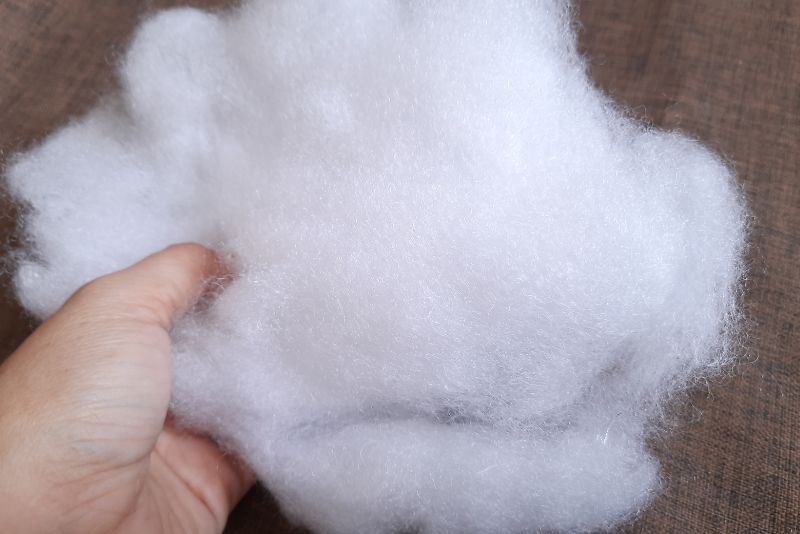
Microfiber fillers consist of small, synthetic fibers densely packed together. They offer a plush and comfortable feel similar to down feathers. Microfiber fillers are known for their excellent insulation properties, providing warmth during colder seasons. They also have good resilience, allowing them to maintain their shape even after prolonged use.
Additionally, microfiber fillers are hypoallergenic, making them a good choice for individuals with allergies or sensitivities. Their easy care and maintenance make them convenient options, as they can usually be machine-washed without losing their softness or fluffiness.
6. Feather Fillers
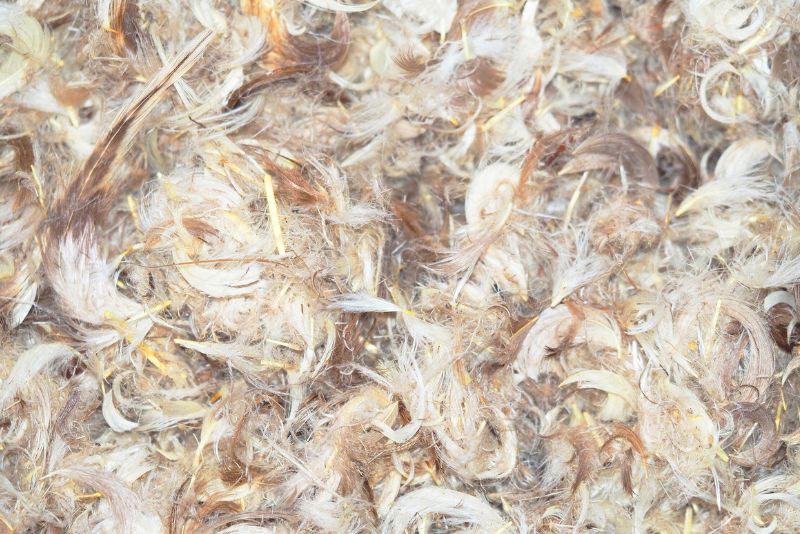
Feather fillings are made from the larger, outer feathers of ducks or geese. They have a structured and sturdier feel compared to down fillers. Feather fillers offer medium-firm support, making them suitable for individuals seeking a balance between comfort and stability.
While some people prefer the resilience and natural feel of feather fillers, it's important to note that individuals with allergies may want to avoid this type of filling, as feathers can occasionally trigger allergic reactions.
7. Wool Fillers

Wool is a natural cushion filler known for its excellent insulation and moisture-wicking properties. This filler offer firm support and help regulate temperature by keeping users warm in colder conditions and cool in warmer climates.
Additionally, wool is resistant to mold, mildew, and dust mites, making it a great option for individuals with allergies or asthma. The natural fibers of wool make it both breathable and hypoallergenic. Wool fillers are also known for their durability, ensuring long-term comfort and relaxation.
8. Cotton Fillers

Cotton fillers consist of natural cotton fibers that offer a soft and breathable feel. They provide medium support and are known for their hypoallergenic properties, making them suitable for individuals with allergies or sensitivities.
Cotton fillers are easy to care for and can be machine-washed without losing their shape or softness. Additionally, cotton is a renewable and sustainable resource, making it an eco-friendly choice for cushion fillers.
9. Microbead Fillers
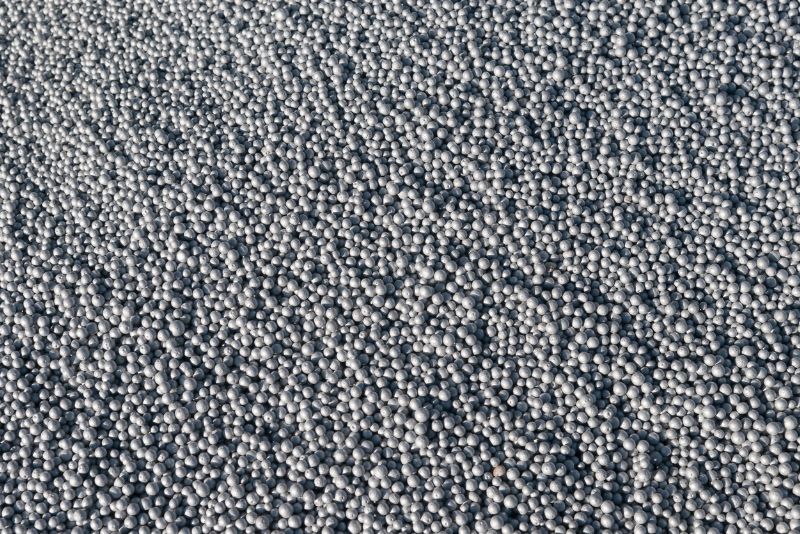
Microbead fillers are made from tiny polystyrene beads that are highly moldable and conform to the shape of the body. They offer customizable support, allowing individuals to adjust the filling to their desired level of comfort.
Microbead fillers provide a unique tactile experience as they gently contour the body's curves. They are often used in travel pillows and specialty cushions where portability and customized support are important factors.
FAQs on Cushion Fillers
Which Cushion Filling is Best?
The best cushion filling completely depends on your personal preferences and needs. There are various options available in the market such as foam, feathers, down, and polyester. Foam is known for its durability and support, while feathers and down provide a luxurious and soft feel. Polyester filling is a popular choice due to its affordability and hypoallergenic properties.
It's important to consider factors like comfort, support, ease of maintenance, and any allergies you may have when choosing the best cushion filling for you. Don't hesitate to test out different options and see what feels most comfortable for your relaxation.
What Kind of Foam is Best For Cushions?
When it comes to foam fillers, high-density polyurethane foam or memory foam are often preferred for cushions. These foams offer durability, support, and comfort. High-density foam provides firm support and maintains its shape well over time, while memory foam molds to the body's contours for a custom fit. Consider your desired level of firmness and feel when choosing the best foam for your cushions.
How Thick Should Foam Be For Cushion?
The thickness of foam for cushions varies depending on the desired level of comfort and support. As a general guideline, foam thickness can range from 1 to 5 inches. For seat cushions, a thickness of 2-4 inches is ideal. For back cushions, a thickness of 1-3 inches is sufficient. While for mattresses, a thickness of 6-8 inches is recommended.
Which Foam is Most Comfortable?
Generally, memory foam is considered one of the most comfortable options due to its ability to contour to the body's shape and relieve pressure points. However, comfort preferences can differ, and some individuals may prefer the firm support provided by high-density foam. It's advisable to try different foam options and consider personal comfort preferences when determining which foam is most comfortable for you.
In Conclusion,
We hope this comprehensive guide has helped expand your knowledge and understanding of the cushion fill types available to you. Remember, cushion fillers are not just about aesthetics but also directly impact your comfort and overall well-being.
With a little exploration, you'll discover the perfect filling that transforms your cushions from mere decorations into havens of comfort and support, elevating your living space and relaxation experience.
So next time you're looking to replace or upgrade your cushions, refer back to this guide to make an informed decision. You can also explore our Furniture Collection to discover a wide range of furniture with different cushion types.










